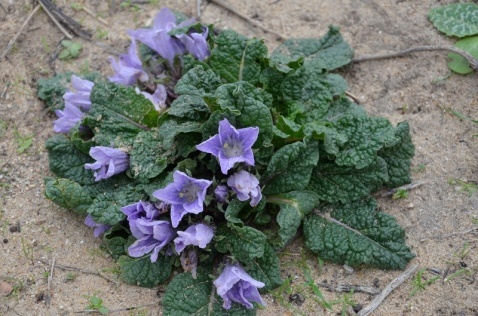
Mandrake - Mandragora autumnalis © Tony Hall |
|
Mandrake - Mandragora autumnalis
by Tony Hall
Commonly known as the Mandrake,Mandragora autumnalis is a low-growing perennial, with thick, dark-green stalked leaves. The stalksare often pale-lilac and form a rosette, with leaves that have a warty appearance and wavy margin.
As their name suggests,this species is autumn flowering, with flowers produced from September through to December.The lilac-blue flowers are usually clustered in the centre of the plant, but are individually stalked. Each bell-shaped flower is five petaled,and narrow, with triangular lobes and darker veining on the inside.
After flowering Mandragora autumnalis produces bright orange, shiny, oval-shaped fruits.
Mandragora grows in a variety of locations, and in most soils, and is often found growing along roadside verges. All parts of this plant are poisonous.
The Mandrake produces a long and deep taproot, which is often forked and is extremely poisonous. Because the shape of the root often resembles the shape of a human torso, it has been linked with witchcraft. The Mandrakehas most recently enjoyed notoriety in the Harry Potter films, where the old tale about the plant shrieking as it is pulled out of the ground and causing the death to whoever pulled the plant from the soil, is narrated.
Tony Hall, Manager of the Arboretum and Gardens at the Royal Botanic Gardens, Kew, specialising in the plants of Andalucía.